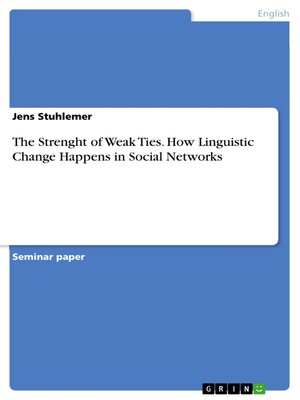
Sign up to save your library
With an OverDrive account, you can save your favorite libraries for at-a-glance information about availability. Find out more about OverDrive accounts.
Find this title in Libby, the library reading app by OverDrive.



Search for a digital library with this title
Title found at these libraries:
| Library Name | Distance |
|---|---|
| Loading... |
Seminar paper from the year 2011 in the subject English Language and Literature Studies - Linguistics, grade: 2.3, University of Cologne, language: English, abstract: The following pages will take a deeper look on the Social Network Theory as part of the sociolinguistics. It will further be discussed, to what extend social networks are bound to concepts of social class. Since the Social Network Theory was primarily build to function as tool within the sociolinguistics, a short summary of two studies will be discussed. Furthermore, oppositions and similarities of Milroy´s and Labov´s theories according to main factors of linguistic change shall be shown. A historical perspective of weak ties will be given at the example of late medieval and early modern London, before the last chapter will not only try to summarize the most important results, but also hint at the importance of an integrated model of the network theory and social factors.







